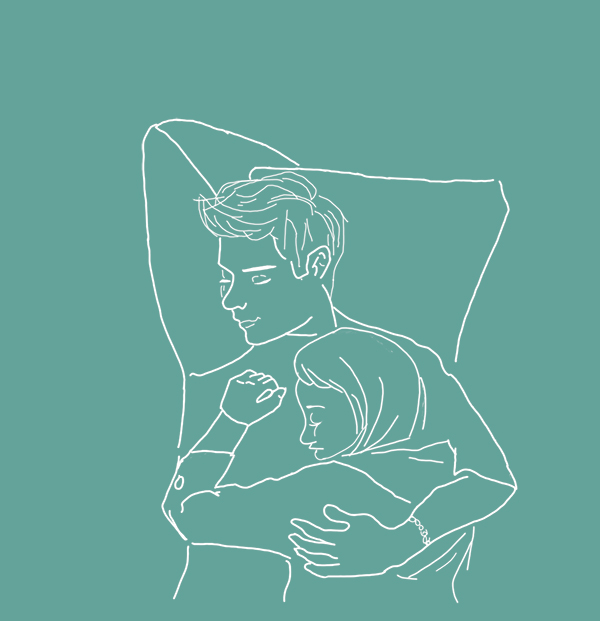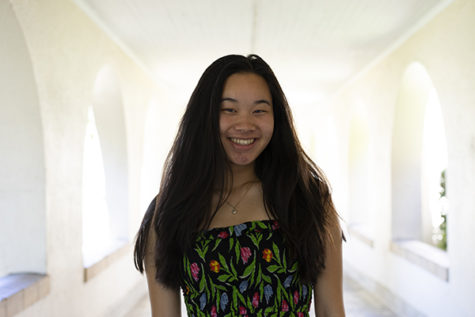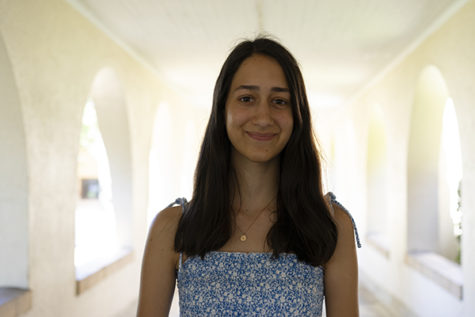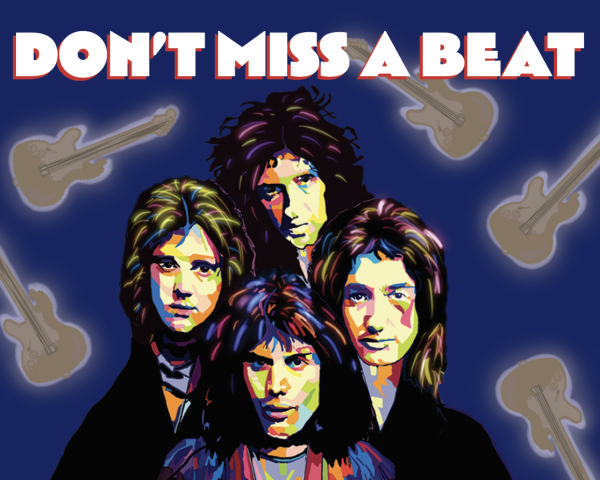High School Heartbreak Club
The familiar, charming storyline commonly used in coming-of-age films is not only unrealistic, but is also harmful to the mentality of students as they become increasingly susceptible to fabricating comparisons between what they see in real life and what they see on screen.
Art by Charlotte Amsbaugh and Megan Andrews
If you’re anything like ‘most high schoolers,’ you’re probably having the time of your life. You’ve got a significant other who happens to either be a star football player or the captain of the cheer team, many friends, parties to attend and important decisions to make — whether you should allow more time towards keeping up with the latest fashion trends or helping co-found another club. With all of these responsibilities, you somehow still manage to excel in your academic and athletic pursuits; by the time senior year rolls around, you are accepted into one of the most prestigious colleges across the country, and one coincidentally happens to be a mile away from the college your sweetheart attends. You go off to college in a long committed relationship and live happily ever after, all thanks to those four glorious high school years.

In today’s teenage generation, many have becomes immersed stories similar to this. As young kids our imaginations can be swept away by high school love stories, leaving us with the recurring thought that we would all have a relationship synonymous to what was depicted on our TV screens. But when high school comes around, reality hits. What was thought to be the time of our lives turns out to be a big misunderstanding as the love stories similar to those in the movies “High School Musical,” “To All the Boys I’ve Ever Loved Before,” “The Kissing Booth” and “Mean Girls” are nowhere to be found. These four movies and many more have received countless praise but have also undergone much criticism for their common misconception of love and inaccurate stereotypes of students in high school.
The teens in coming-of-age movies are known to use cliques to form a social hierarchy. Some of the familiar cliques are the ‘jocks,’ usually portrayed as popular delinquents, the ‘nerds,’ generally depicted as friendless and weak, the ‘populars,’ who can be perceived as judgmental and mean, and the ‘goths,’ who are often seen as intimidating and dark. Usually, many of the students do not intermingle among other groups, promoting an extreme lack of diversity. The broad physical generalizations of these students can also take away other aspects of characters’ personalities and can have adverse effects on viewers who may feel some sort of connection to these attributes. These established stereotypes can cause teenagers to analyze each other critically without getting to know someone beyond their exterior and social status. It can also distort a teenagers’ perception of how high schoolers really behave and normalizes the idea of exclusion. After viewers form internalized biases due to the ever-present concept of cliques, it can be quite shocking to find that this is often not the case.
Palo Alto High School junior Sophie Stier has come to terms with how our reality contrasts with those in movies. “They make high school seem like it’s all about popularity, partying and getting a boyfriend,” said Stier. “In real life, high school is much more about getting good grades, preparing for college, and trying to [maintain] good mental and physical health.”
Because of their wide reach, movies depicting high school are also able to instill this fantasy where the most popular guy at school, generally a jock, falls in love with a timid, usually very smart, sweet girl. After watching stories like these unfold, high schoolers are under the impression that this is the norm for high school and that if this does not end up happening, there must be something strange and abnormal about them. Paly junior Eve Donnelly describes her tendencies of falling for what is seen on the screen. “I always catch myself thinking that certain events could play out like scenes I see in movies but then I remember they’re movies and I’m delusional,” Donnelly said.
On top of this, the protagonist is usually portrayed with an incessant need to have a significant other in order to feel validated and happy. A social hierarchy is created, in which couples are placed at the top and the non-couples are placed at the bottom. This social structure, however, is far from reality, impacting how many high school students perceive themselves and the experience they’ve longed for all their lives. They may feel as though their lives are mundane and lacking something when in actuality, there are much more important things to dwell on than getting asked to the prom.
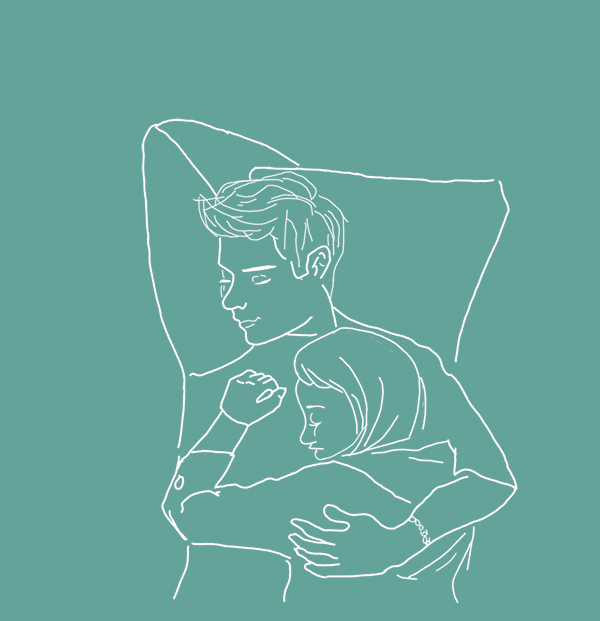
Many Paly students visit the Wellness Center in hopes of alleviating their relationship and friendship struggles. Because teen movies often fail to portray the many problems that occur within a relationship, multiple aspects of students’ lives can be impacted. Paly’s Mental Health and Wellness Coordinator Elizabeth Spector has dealt with many relationship related problems with students.“Relationships are such a huge part of an adolescent’s life and learning to navigate relationships is an important skill,” Spector says. “It’s easy in high school to be susceptible to cliques because people are trying to find their identities and a sense of meaning, purpose, and belonging.”
Consistently watching romance movies in which unrealistic “happily ever after” endings can significantly harm students who are prone to comparing themselves and their own relationships with those in the theaters. “Movies do tend to romanticize these relationships and can place unrealistic pressure on adolescents,” Spector says.
As a result, students feel enormous pressure to morph their lives into the lives they see in movies, which can ultimately contribute to mental health issues such as anxiety, depression and low self-esteem. Spector also discussed how struggles with mental health can greatly impact relationships and that those who may have mental health issues often stay in unhealthy and harmful relationships solely to gain social status. They often neglect their own mental health and even sacrifice other relationships in their lives in order to live up to the idea of having a ‘high school sweetheart.’
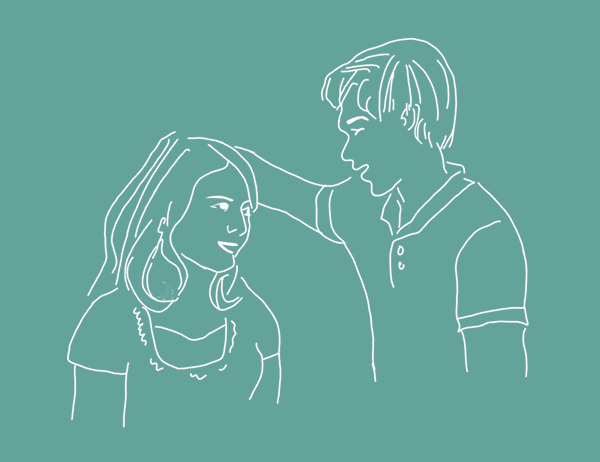
Spector stresses the importance of healthy relationships and how students should learn to be aware of themselves and their mental health while in a relationship. “It’s important to learn about what it means to be in a healthy, mutual relationship,” Spector says. “It’s also important to maintain friendships and other relationships while in a romantic relationship.”
It is difficult to not fall into the trap of teen movies, yet is crucial to students’ mental health to be able to form stable, healthy relationships.
While swooning over the grand romantic gestures and desiring to be a part of the exciting popular clique seen in iconic ‘rom-coms’ is a fun, entertaining way to pass time, what is portrayed in movies is far from reality. Realistic friend groups are more diverse, filled with students of different interests and needs in life. Moreover, relationships are much more than an instant attraction, requiring a great amount of dedication and commitment in order to flourish. Films with nonrepresentational and romantic tales of high school leave many anticipating the experience unaware of what their reality holds, and how they can find happiness in ways that deviate from these ‘conventional’ experiences.

Mahati Subramaniam joined C Magazine because of the variety of content that was present, and the interesting designs. Her favorite part of C mag is production...


